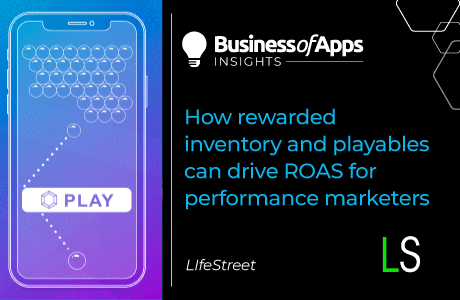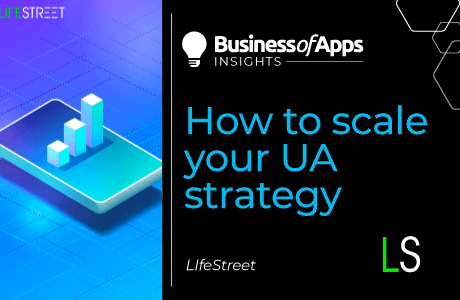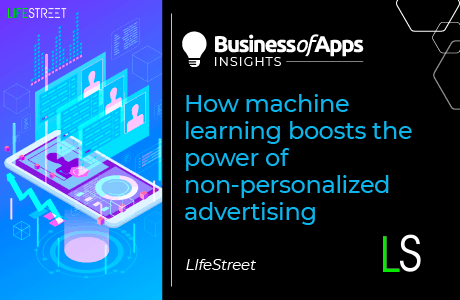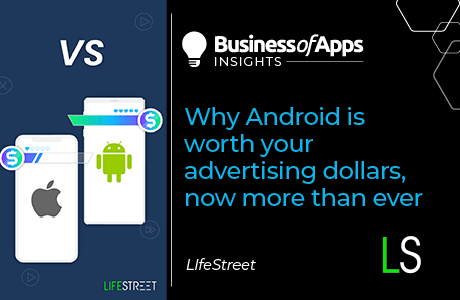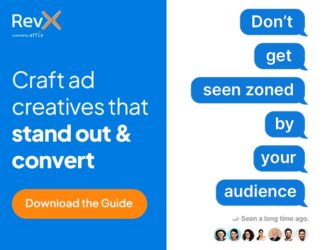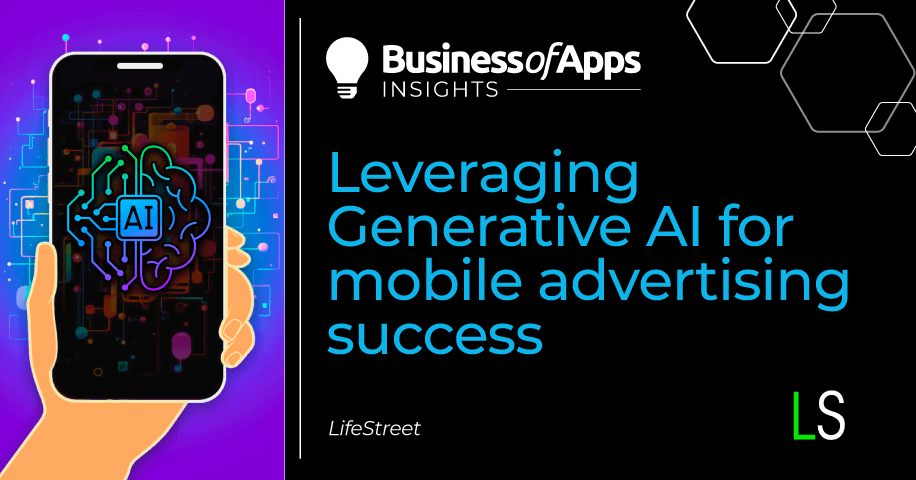
The AI revolution isn’t near, it’s here; and, it’s streamlining workflows and unlocking new efficiencies across business sectors. Currently, AI is being touted as a universal solution (or catalyst) for a wide range of problems. But really, it’s most helpful to view generative AI solutions as powerful new tools that will improve many work processes that exist today and unlock opportunities that were previously not addressable.
In mobile advertising, generative AI offers exciting possibilities for optimizing ad creatives, bidding strategies, and data science. The ad tech industry has always been an early adopter of emerging technologies, from programmatic advertising to augmented reality (AR). In this latest wave of technological innovation, mobile advertising is again poised to be an early adopter. This time, by using generative AI to create personalized, engaging ads at scale.
What is generative AI?
Rather than classifying information or making plans like many AI applications, Generative AI produces new and original content in the form of text, images, audio and video in response to text prompts. This technology has grown rapidly since the launch of large language models (LLMs). For example, each new version of OpenAI’s GPT (Generative Pre-trained Transformer) has been far superior to its predecessor’s. With each iteration, OpenAI’s GPT LLM has incorporated new techniques and larger datasets which have quickly improved its ability to process and generate natural language text, and in some cases resulted in surprising emergent capabilities.
In 2018, OpenAI released GPT-1 which required advanced technical skills to use. GPT-2, released a year later, was primarily designed as a research tool but some businesses and organizations began to experiment using this version in applications such as chatbots and customer service automation. In 2020, GPT-3 became the biggest and most advanced GPT model, measured by its ability to generate coherent and contextually appropriate responses.
Thanks to the implementation of OpenAI’s GPT-3.5 and GPT-4 foundational LLMs, the chatbot ChatGPT, released in November 2022, is the easiest to use and the first version that has been marketed to the general public, leading to greater recognition of generative AI’s potential.
The future of generative AI in mobile advertising
Generative AI will create a world in which content creation is free or close to free. This will unlock tremendous efficiencies in the personalization of ad creatives and the scale at which mobile advertising processes are executed.
Content creation
Currently, generative AI can be used to create and optimize marketing copy—from ad text to blog posts and product messaging. We are also at the beginning stages of generative AI being able to create custom images and graphics. Once that capacity includes video, the scale at which ad creatives across formats can be designed, tested, and launched will reach an efficiency we’ve never seen before.
Cost efficiency
Generative AI will slash costs by either making outputs cheaper to produce or allowing teams to produce more with fewer resources. For a firm running brand ads with a team of 10 designers, only a handful of designers using generative AI tools will likely be needed.
Data augmentation
With the limitless supply of information available on LLMs via simple text prompts, mobile DSPs can use tools like Chat GPT4 to augment their data about audiences and app inventory. This, in turn, will fill gaps in information created by data privacy restrictions like Apple’s ATT Framework. Marketers can augment their data with generative AI to build high-performing audience segments and bidding strategies without the need for user-level data provided through device IDs like the IDFA. Our data team has already begun using generative AI to augment contextual information at the bid request level so we can bid more efficiently on users with hyper-personalized ads.
As an example—let’s say you don’t have information about a user’s mobile browsing behavior, but you know they’re in a certain zip code. You can use GPT APIs to get more information about this data by prompting it to generate keywords describing the demographics of people who live in that zip code. This might include information about how people in that zip code like biking or care about environmental issues. With this information, you can customize the messaging of your ads and target them more effectively. We’ve tested the addition of the GPT tags on zip codes and cities and have observed 9.4% lower CPIs on non-rewarded traffic and 6.3% lower CPIs on rewarded traffic.
Steps you can take to onboard generative AI in your mobile advertising campaigns today
Generative AI is certainly in the early stages of development and deployment, but its capabilities are accelerating rapidly. Very soon the use of AI to generate ad creatives and improve bidding will be table stakes for mobile marketers. Here are actionable steps your organization can take to not get left behind.
Foster experimentation in your organization from the bottom up
Marketing teams should be encouraging their members to experiment with generative AI in their jobs as much as possible. Why? Because understanding how this technology can be leveraged from the top down is inefficient. Every team member should be encouraged to use and discuss how generative AI can enhance the performance of their tasks. This will bubble up use cases to the top level of how generative AI can be maximized to scale processes.
Consider drawbacks
In its current state, the implementation of LLMs in chatbots like Chat GPT creates content based on the internet which is fraught with imprecise and incorrect information. That being said, generative AI in its current state certainly still needs manual human review. This review is necessary to vet “hallucinations“—outputs that may sound plausible but are either factually incorrect or unrelated to the given context—and to maintain a human voice in ad creatives. Using generative AI blindly without reviewing messaging for emotion and brand alignment can erode customer trust and deter your ultimate goal of creating personalized, engaging ads.
Balance cost and performance trade-offs
Start thinking critically about the ways in which generative AI can help you execute mobile advertising campaigns at a fraction of the cost. Make sure to balance these considerations with campaign performance and efficacy. While the current capabilities of generative AI might help you execute campaigns with fewer resources, they might not necessarily improve the performance and quality of your ads.
The AI advantage
By leveraging generative AI, mobile advertisers can cut costs, augment their data, and create personalized, engaging ads at scale. Those who embrace this technology with a thoughtful and strategic approach are likely to gain a competitive edge in the next frontier of technological innovation: the AI revolution.





